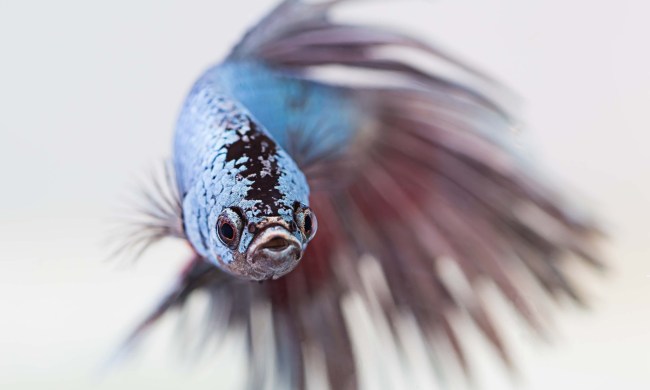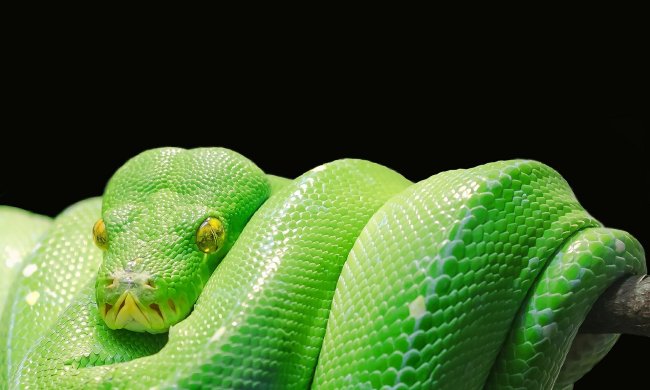Are you looking for a conversation piece for your office? Consider buying a fish. They are low-maintenance office pets. They’re relaxing to watch and invite more conversation than a houseplant.
If you work in a cubicle or only have a small amount of space to devote to a fish, consider one of these varieties. As long as you feed them regularly and keep their tank clean, they’ll provide hours of enjoyment for you and anyone who visits your office during the workday.
Meanwhile, if you’re seeking out impressive species for your house and you want a truly jaw-dropping conversation piece, check out small sharks for home aquariums.
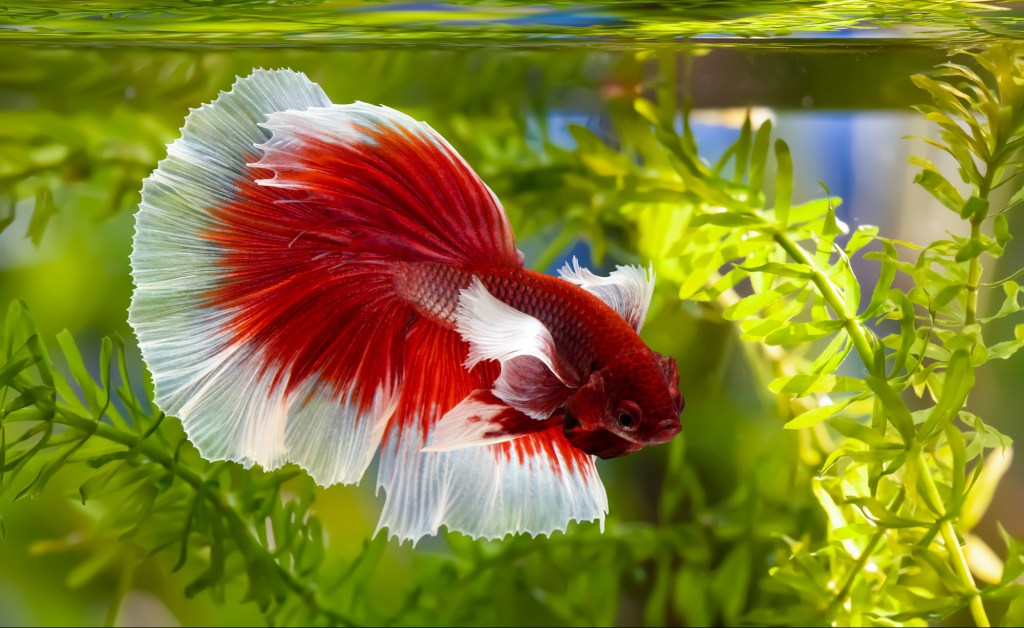
Betta (Siamese Fighting Fish)
Sporting brilliant colors and an attitude, the betta makes a bold statement. These beautiful fish are extremely aggressive and do best when they are the only fish in the bowl. Even so, they are extremely low-maintenance and provide a display of color and majesty as they swim through the water.
Betta fish originate from Thailand where they live in shallow marshes, flood plains, and rice paddies. Their life expectancy is three to five years.
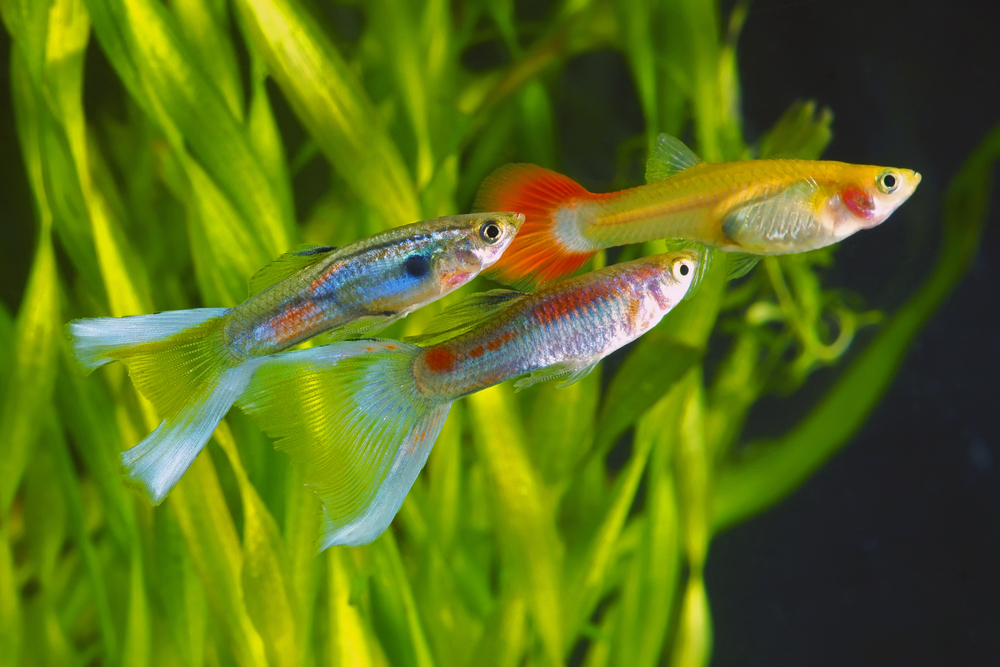
Guppies
Guppies come in a variety of colors — even neon. They are one of the several varieties of fish that harmonize with bettas quite well. Their colorful tail fins come in a wide variety of colors and shapes. You can keep several together in a large bowl; however, if you don’t want a bunch of baby guppies, make sure you buy only males.
These inexpensive fish are very energetic, especially around feeding time, and only require clean water and as much food as they can eat in 20-40 seconds once or twice a day. Native to South America, there are nearly 300 varieties of guppies. Their average lifespan is approximately two years.
Mollies
Mollies are a collection of three species of fish originating from the Southeastern United States, the Gulf of Mexico, South America, and Central America. They come in a variety of colors and have an average life expectancy of one and a half years.
Like guppies, these livebearing fish will produce a lot of offspring, so consider buying males if you don’t want to deal with babies. They do best in a well-planted tank with a sandy bottom where they can search for food.
Endler’s Livebearers
Endler’s Livebearers are a smaller version of the guppy that grow to a length of 1 inch. Their vibrant colors are displayed in striking patterns, and many have a double sword tail. They love a habitat filled with plants and other secluded places to hide.
These hardy, livebearing fish originate in Venezuela, and as schooling fish, do best in groups of three or more. Their average lifespan is two to three years.
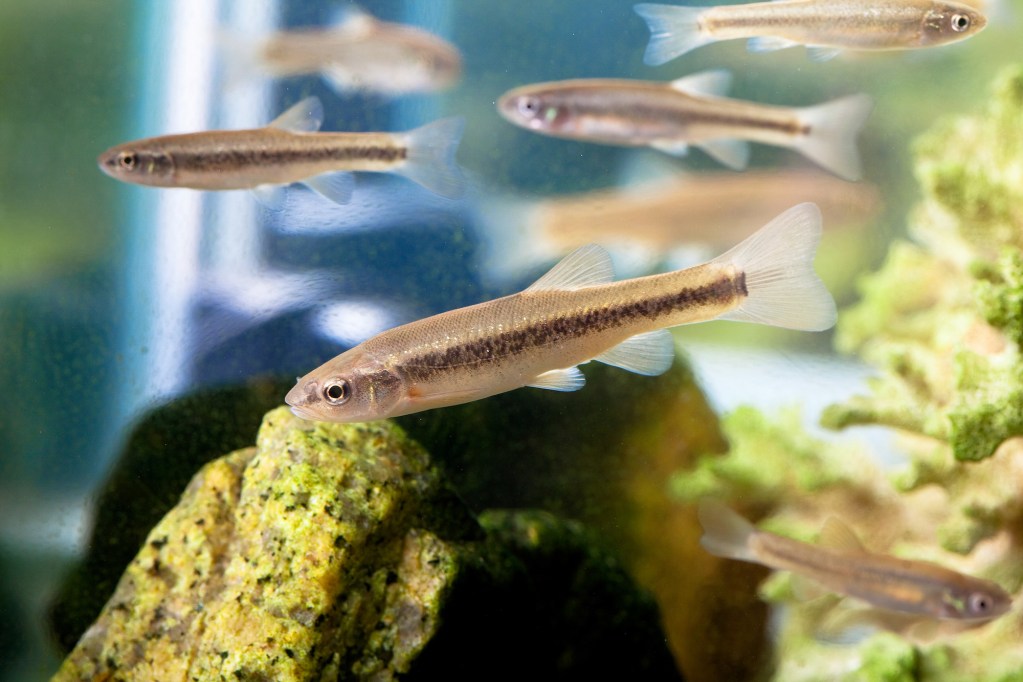
White Cloud Minnows
These small, peaceful fish only grow to a length of 1.5 inches and can live up to seven years. Due to their timid nature, they prefer to have plants and other hiding areas in the tank. They are school fish and are happiest in groups of five or more.
White cloud minnows are native to the Pearl River in China. Common varieties are silver and green with iridescent pink stripes. They have big appetites, and even though they will feed on the algae in your bowl, must be fed a diet of live prey (water fleas and brine shrimp), greenery (green algae), and flake or pellet food twice a day.
Pygmy Corydoras
These friendly little catfish only reach a length of 1 inch that like sandy gravel and lots of plants in their habitat. These peaceful fish, native to the upper Rio Orinoco basin in Columbia and Venezuela, are easy to care for. They have a lifespan of three years.
Because they are school fish, it’s best to keep them in groups of four or more. They swim very close to the ground, digging for leftover food in the sand.
Neon Tetras
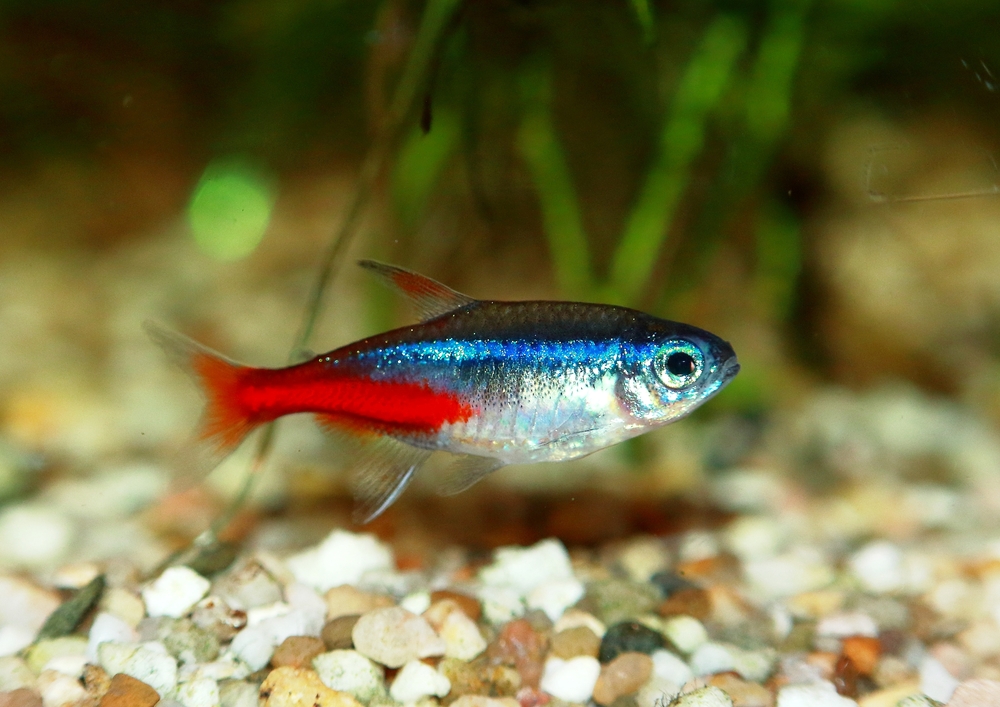
Originating in the Amazon basin of South America, neon tetras are brilliant little flashes of red and blue color which usually don’t grow much longer than 1.5 inches. Although they are hardy fish once they’re established in the tank, they are very susceptible to changes in their environment and are the most delicate during the first week.
These peaceful fish like to travel in groups, so plan to add several in your tank. They eat twice a day and have an average lifespan of 10 years.
Cherry Shrimp
Freshwater cherry shrimp are a colorful and unique alternative to owning traditional fish. Since they don’t produce much waste, you can keep as many as 20 in a 5-gallon container. Native to the streams and ponds in Taiwan, they are happiest in a densely planted tank where they can hide and nibble on the algae and moss. Cherry shrimp are active day and night but only live for one to two years.
Harlequin Rasboras
Rasboras are schooling fish that are closely related to goldfish and koi. Dwarf emerald rasboras are perfect for small office tanks. Because they are school fish, plan to purchase several together so they feel safe. Four is the limit for a 5-gallon tank.
These peaceful, colorful fish originate from southeast Asia where they live in forest streams and floodplains. Their metallic silver and orange fins are eye-catching, and they can live as long as six years.
Enjoy the adventure
Research indicates having an office fish tank reduces stress, lowers blood pressure and anxiety levels, and can even improve your sleep quality. And, thanks to the recent popularity of the hobby, you can easily find aquatic kits of every size at your local pet store. Have fun choosing the right tank and fish to fit your space and personality!
